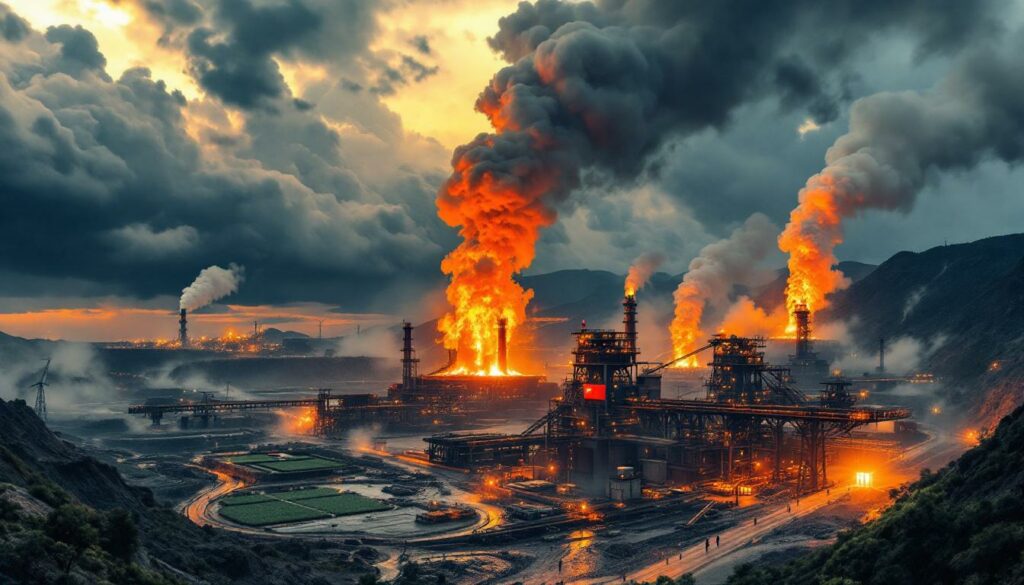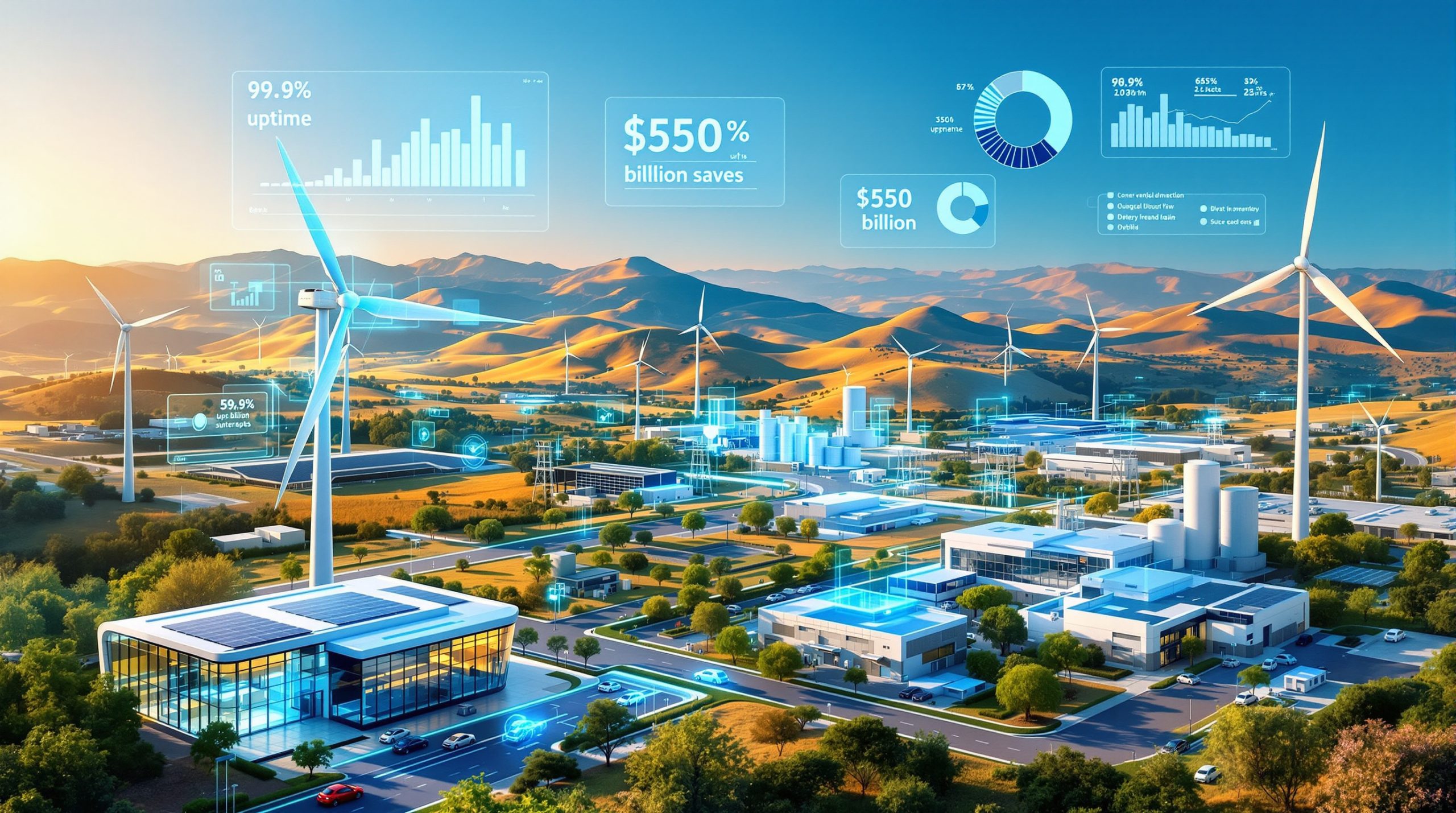China's Coal Pipeline Risks Creating Glut and Blowing Climate Goals
China's aggressive expansion of coal mining operations is setting the stage for potential coal oversupply risks while simultaneously threatening global climate objectives. With hundreds of new mines under development, the world's largest coal consumer is doubling down on fossil fuels despite international pressure to transition to cleaner energy sources. This massive buildout not only contradicts global climate commitments but also risks repeating past economic crises that devastated the coal industry.
What is China's Current Coal Development Pipeline?
Scale and Scope of China's Coal Expansion
China currently has over 450 coal mine sites in development across the country, representing an unprecedented expansion of fossil fuel infrastructure. Nearly 40% of these projects are already under construction or in test operation, indicating substantial committed investment and near-term production increases.
These mines collectively represent a staggering 1.35 billion tons of annual production capacity—a figure that exceeds the combined output of Indonesia and Australia, the world's two largest coal exporters. This massive buildout places China at the center of global coal production, accounting for approximately 60% of all proposed coal mine capacity worldwide.
"Without drastically scaling back plans for new mine capacity, the world could see a massive rise in potent methane emissions that would make it all but impossible to reach the goals of the Paris Agreement," warns Dorothy Mei, project manager of the Global Coal Mine Tracker at Global Energy Monitor.
Regional Distribution of New Coal Projects
Inner Mongolia leads China's coal expansion efforts, with provincial authorities fast-tracking approvals to meet national quotas established by Beijing. This resource-rich region has become the epicenter of new mining activity, leveraging its vast coal reserves and existing infrastructure networks.
The strategic placement of new mines prioritizes proximity to industrial centers and power generation hubs, minimizing transportation costs while maximizing energy security. Development is concentrated in provinces with established mining expertise, existing rail infrastructure, and favorable geological conditions for efficient extraction.
How Does China's Coal Expansion Threaten Climate Goals?
Methane Emission Implications
The environmental consequences of China's coal buildout extend far beyond carbon dioxide. According to research from Global Energy Monitor, China's coal expansion alone would generate approximately 80% of methane emissions tied to planned global coal projects. This is particularly alarming because methane is over 80 times more potent than carbon dioxide as a greenhouse gas over a 20-year timeframe.
These projected emissions create a nearly insurmountable obstacle to achieving the temperature targets established in the Paris Agreement. The scale of China's coal development directly contradicts the country's own stated climate commitments, including President Xi Jinping's pledge to achieve carbon neutrality by 2060.
Climate scientists have emphasized that coal's methane footprint remains underappreciated in policy discussions. Unlike carbon dioxide emissions, which primarily occur during combustion, methane leaks throughout the mining process—during extraction, processing, and transportation—creating a substantial climate impact before the coal is even burned.
Widening Gap to Climate Targets
United Nations guidance indicates that global coal production needs to fall by approximately 75% by 2030 to maintain a viable pathway to limiting warming to 1.5°C. Similarly, the International Energy Agency (IEA) calls for a 39% reduction in coal output this decade.
Current development trends are moving in precisely the opposite direction of these recommendations. Instead of the required contraction, the coal industry is expanding capacity substantially, creating a widening gap between climate necessities and energy realities.
To meet climate targets, annual retirement of coal capacity would need to significantly exceed new additions under both UN and IEA scenarios. However, China's massive expansion makes this transition mathematically impossible without dramatic policy interventions and accelerated mine closures.
Why is China Pursuing Coal Expansion Despite Risks?
National Energy Security Priorities
A 2024 directive from Beijing explicitly calls for building 300 million tons of reserve mine capacity by 2030, framing coal expansion as a matter of national security. This policy reflects China's strategic prioritization of energy independence and supply resilience over environmental considerations.
Local governments across coal-rich regions have been incentivized to fast-track approvals, with provincial officials measured against quotas for new capacity development. This creates a system where environmental concerns are frequently subordinated to production targets.
China's energy planners view this domestic production capacity as essential insurance against international supply disruptions, price volatility, and geopolitical tensions that could threaten energy imports. The COVID-19 pandemic and recent global conflicts have only reinforced this perspective, as supply chain vulnerabilities became more apparent.
Economic and Industrial Considerations
Coal remains central to China's industrial manufacturing base, powering everything from steel mills and cement plants to chemical production and aluminum smelting. Despite significant investments in renewable energy, coal still accounts for approximately 60% of China's electricity generation.
Short-term economic growth continues to take precedence over long-term climate commitments, particularly in regions where coal mining represents a significant source of employment and tax revenue. Mining operations create direct and indirect jobs throughout the supply chain, from extraction to transportation and power generation.
The coal industry also maintains significant political influence in resource-rich regions, where local economies have developed around mining activities for generations. This creates powerful constituencies that advocate for continued expansion despite environmental and economic risks.
What Economic Risks Does China's Coal Pipeline Create?
Potential Market Oversupply Scenario
China's current coal buildout bears striking similarities to the conditions that preceded the 2012-2015 overcapacity crisis, which devastated the industry financially. During that period, a surge in new mine development led to production far exceeding demand, triggering price crashes that pushed many operations into unprofitability.
With nearly half of the currently proposed capacity still in early planning stages, there remains an opportunity to prevent history from repeating itself. Market analysts warn that proceeding with all planned projects would likely create another round of oversupply, particularly as renewable energy continues to gain market share and economic competitiveness.
The potential for demand destruction also looms large, as industrial efficiency improvements, economic structural changes, and alternative energy sources gradually reduce coal consumption intensity across China's economy. This creates a scenario where new mines may come online just as demand plateaus or begins to decline.
Stranded Asset Risks
The long-term economic viability of new coal assets is increasingly questionable as the energy transition challenges accelerate. With operational lifespans of 30+ years, mines being developed today will face a radically different energy landscape by mid-century.
Financial institutions worldwide have increasingly restricted funding for coal projects, recognizing the growing risk of stranded assets. Major international banks, insurance companies, and investment funds have announced policies limiting or eliminating support for new coal developments.
International pressure through carbon border adjustment mechanisms and climate-focused trade policies may also impact export markets for Chinese coal in coming decades. As major economies implement carbon pricing and emissions restrictions, coal-intensive products face growing competitive disadvantages in global markets.
How Does China's Coal Expansion Compare Globally?
Global Coal Development Trends
While China dominates coal development, it isn't alone in expanding capacity. Globally, approximately 105 million tons of coal production capacity was added in 2024, representing a 46% decrease compared to the previous year—the lowest global expansion rate in at least a decade.
Despite this slowdown, more than 850 new mines or expansions remain under development across 30 countries, indicating continued investment in fossil fuel infrastructure despite climate commitments. This global pipeline represents a significant challenge to emissions reduction targets.
China's expansion exists within this broader context of continued global coal development, albeit at a more aggressive scale and pace than most other regions. The collective impact of these projects undermines the feasibility of meeting Paris Agreement targets without dramatic policy interventions.
Other Major Coal Development Regions
After China, India represents the second-largest center of coal development, with projects totaling approximately 329 million tons of new capacity. The country faces similar tensions between development priorities, energy security concerns, and climate commitments.
Australia follows with approximately 165 million tons of projects in various stages of development, primarily targeting export markets. Australian coal tends to be higher quality than many competing sources, with lower ash content and higher energy value, which producers use to justify continued expansion despite climate concerns.
This global picture reveals a significant gap between stated climate commitments and actual development plans across major coal-producing nations. The disconnect between policy rhetoric and infrastructure development creates substantial challenges for emissions reduction efforts.
What Are the Potential Solutions to Balance Energy Needs and Climate Goals?
Policy and Regulatory Approaches
Implementing stricter environmental impact assessments for new projects could help filter out the most damaging proposals while allowing more efficient operations to proceed. This nuanced approach recognizes the continued role of coal while minimizing its negative impacts.
Accelerating the retirement of older, less efficient mining operations could create space for limited new development while maintaining or reducing overall production capacity. This "replace, don't add" approach would modernize the coal fleet without expanding total output.
Establishing effective carbon pricing mechanisms would help account for climate externalities currently omitted from market decisions. By incorporating the true cost of emissions, investment would naturally shift toward cleaner alternatives when economically viable.
Creating comprehensive transition plans for coal-dependent communities is essential for managing the social and economic impacts of a declining industry. Without such planning, political resistance to climate policies will remain insurmountable in many regions.
Alternative Energy Investment Strategies
Redirecting a portion of coal investment toward renewable energy infrastructure would help diversify China's energy portfolio while creating new employment opportunities in growth sectors. Wind and solar deployment has accelerated in China, but further investment is needed to replace coal capacity.
Developing advanced energy storage solutions represents a critical complement to renewable generation, addressing intermittency challenges that currently necessitate fossil fuel backup. Breakthrough technologies in this space could dramatically accelerate coal phase-out.
Modernizing grid infrastructure to accommodate diverse, distributed energy sources would enable higher renewable penetration while maintaining system reliability. Smart grid technologies, demand response systems, and improved transmission networks are key enablers of this transition.
Investing in energy efficiency across industrial, commercial, and residential sectors offers the most cost-effective approach to reducing overall demand. Efficiency improvements can deliver the same economic output with substantially lower energy inputs, reducing the need for new generation capacity.
FAQ: China's Coal Development and Climate Impact
How much of global coal capacity is China responsible for?
China accounts for approximately 60% of all proposed coal mine capacity worldwide. Its current development pipeline of 1.35 billion tons annually exceeds the combined output capacity of Indonesia and Australia, the world's largest coal exporters. This dominance gives China's policy decisions outsized influence on global climate outcomes.
What is the climate impact of China's coal expansion?
China's coal buildout alone would generate approximately 80% of methane emissions tied to planned projects globally. Methane is over 80 times more potent than carbon dioxide as a greenhouse gas over a 20-year period, making these developments particularly concerning for climate goals. These emissions occur throughout the coal lifecycle, not just during combustion.
Is China's coal expansion economically sustainable?
Economic analysts warn that China's current coal buildout risks creating another round of overcapacity similar to the 2012-2015 period, which triggered price crashes and stranded assets. Nearly half of the proposed capacity remains in early planning stages and could still be reconsidered. As renewable energy costs continue to fall and climate policies strengthen, the long-term economic viability of new coal assets becomes increasingly questionable.
How does China's coal expansion affect global climate targets?
The United Nations indicates coal production needs to fall 75% by 2030 to meet climate goals, while the International Energy Agency calls for a 39% reduction. China's expansion moves in the opposite direction of these targets, making them increasingly difficult to achieve. Without dramatic policy reversals and accelerated mine closures, the Paris Agreement temperature targets become mathematically unattainable.
Key Statistics on China's Coal Development
| Metric | Value | Context |
|---|---|---|
| Coal sites in development | 450+ | Across all of China |
| Combined capacity potential | 1.35 billion tons annually | Exceeds Indonesia and Australia combined |
| Percentage under construction | Nearly 40% | Already committed investments |
| Share of global proposed capacity | 60% | China dominates global coal development |
| Methane emissions contribution | 80% | Of all planned coal projects globally |
| Beijing's reserve capacity target | 300 million tons | To be built by 2030 |
| Global capacity added in 2024 | 105 million tons | 46% decrease from previous year |
| India's development pipeline | 329 million tons | Second largest after China |
| Australia's development pipeline | 165 million tons | Third largest globally |
Expert Insight: "Without drastically scaling back plans for new mine capacity, the world could see a massive rise in potent methane emissions that would make it all but impossible to reach the goals of the Paris Agreement," – Dorothy Mei, project manager of the Global Coal Mine Tracker at Global Energy Monitor.
Further Exploration and Implications
Climate Impact Beyond Carbon
While much climate discussion focuses on carbon dioxide, China's coal expansion highlights the critical role of methane in accelerating warming. Coal mining releases significant methane—a potent greenhouse gas that creates substantial warming effects in the near term, even before the coal is combusted.
Methane mitigation technologies exist but remain underutilized in many mining operations. Capturing and utilizing this gas could reduce climate impact while providing additional energy resources, creating a partial win-win that deserves greater attention from policymakers and industry.
Market Dynamics and Pricing Pressure
Coal prices historically follow boom-bust cycles, with periods of underinvestment leading to price spikes that trigger overbuilding, followed by price crashes. China's massive expansion risks amplifying this cycle, potentially creating significant financial losses for investors and state-owned enterprises alike.
Industry analysts suggest that only the most cost-efficient projects should proceed, with marginal developments reconsidered or delayed. This selective approach would help maintain market balance while still addressing legitimate energy security concerns.
Technological Transition Pathways
Coal-to-chemicals and coal-to-hydrogen technologies represent potential transition pathways that could utilize coal resources while potentially capturing emissions. While not zero-carbon solutions, these approaches could serve as bridge technologies during a broader energy transition.
Carbon capture utilization and storage (CCUS) technologies, though still expensive and limited in deployment, offer another potential pathway for reducing the climate impact of continued coal use. Significant cost reductions and policy support would be required for widespread adoption.
Geopolitical Considerations
China's coal expansion strategy reflects broader concerns about energy security in an uncertain geopolitical landscape. As international tensions rise, domestic energy sources gain strategic importance beyond their economic value.
However, this approach creates tension with China's diplomatic positioning as a climate leader on the global stage. The contradiction between domestic coal expansion and international climate commitments creates vulnerabilities in China's foreign policy narrative that competitors may exploit.
Understanding China's coal development requires balancing multiple perspectives—energy security, economic development, environmental protection, and international relations—in a complex and rapidly evolving global context. The decisions made about these coal projects will have repercussions for decades to come, affecting not just China but global climate outcomes and mining decarbonisation benefits.
Wondering About the Next Major Mining Discovery on the ASX?
Discovery Alert's proprietary Discovery IQ model identifies significant ASX mineral discoveries in real-time, giving you an immediate market advantage before price movements occur. Explore why major mineral discoveries can lead to exceptional returns by visiting Discovery Alert's dedicated discoveries page.




